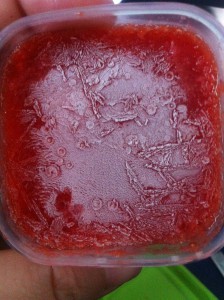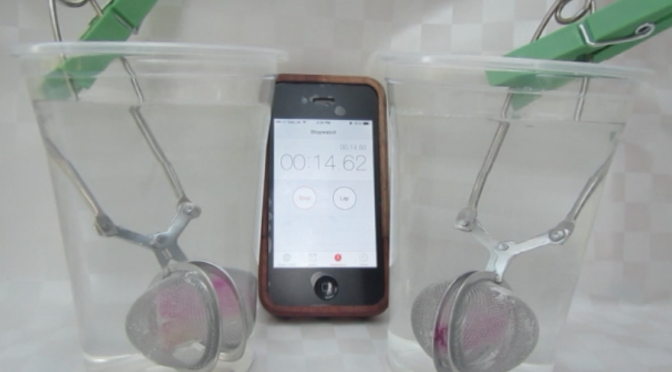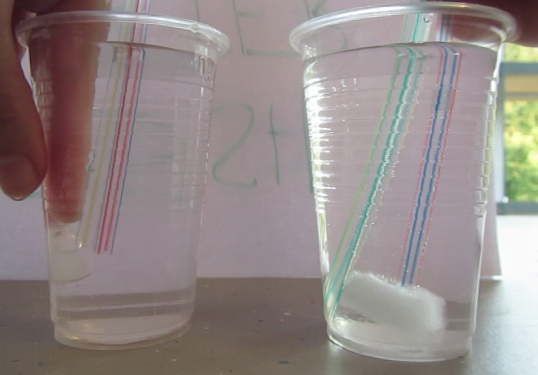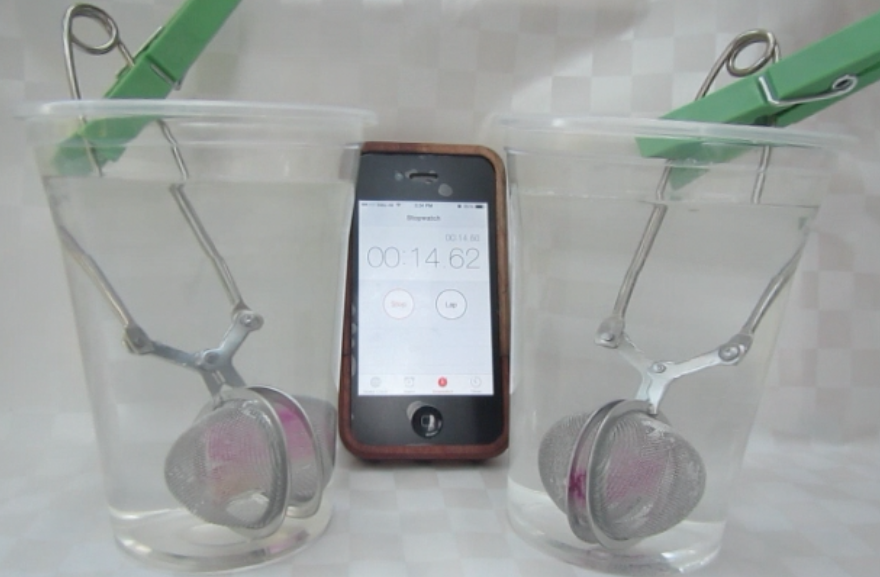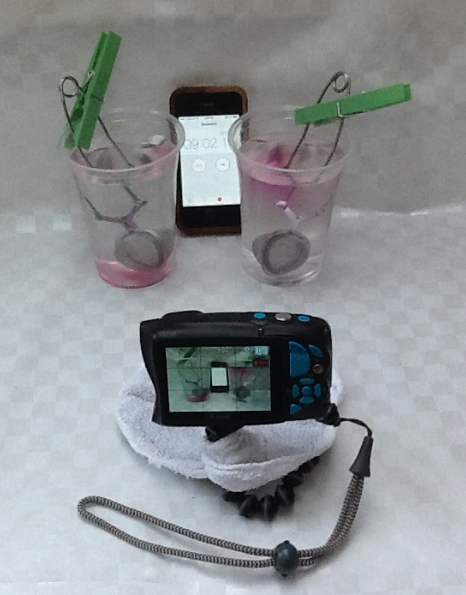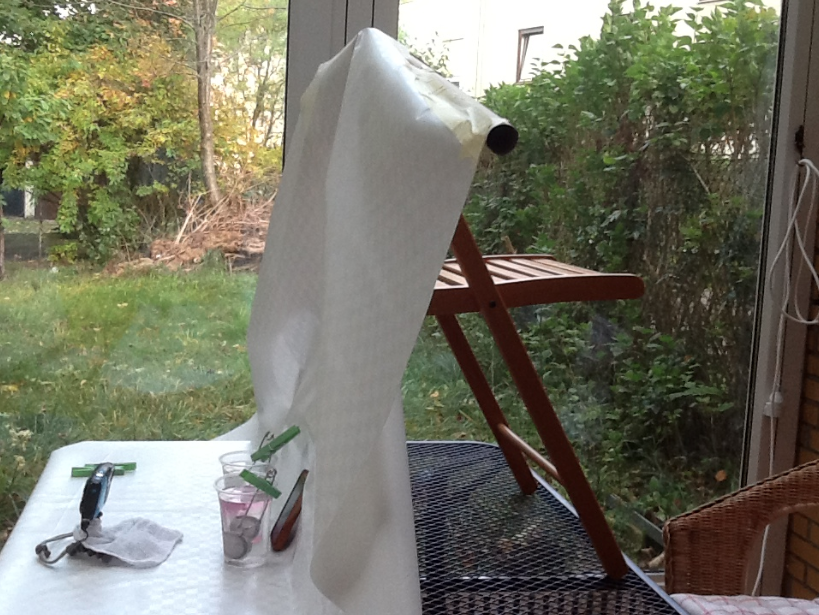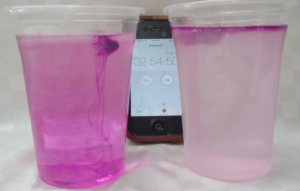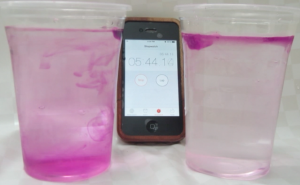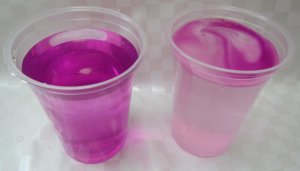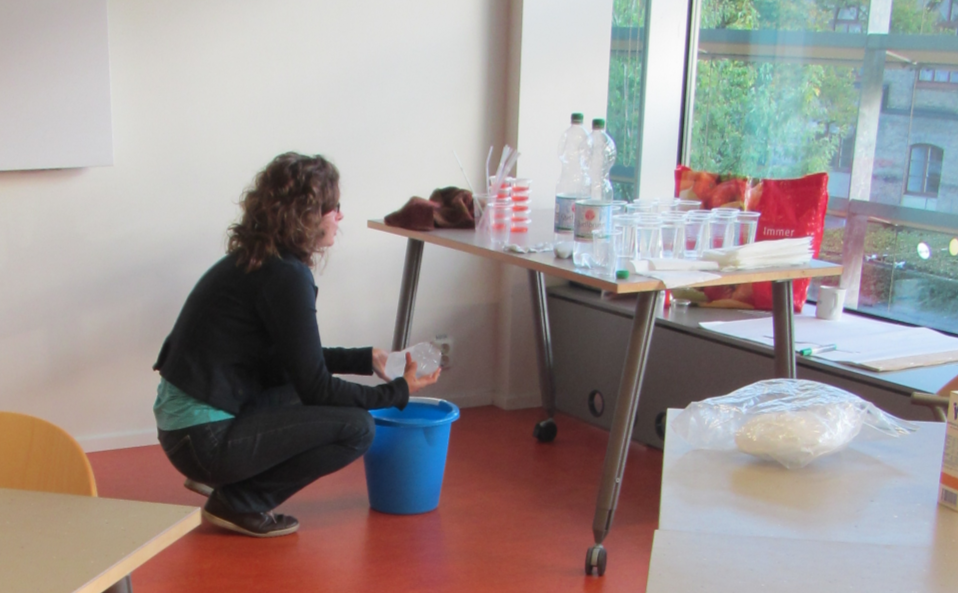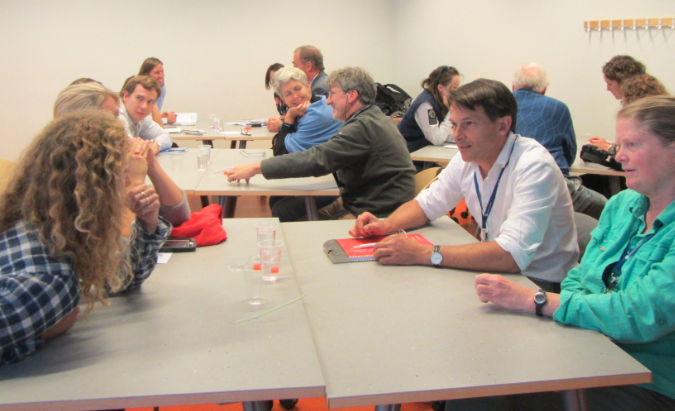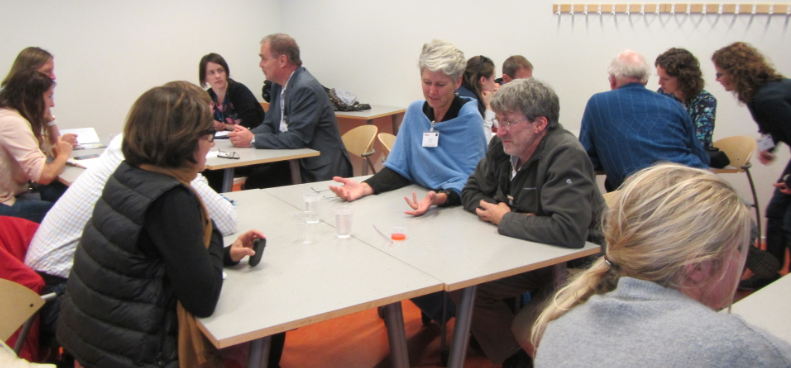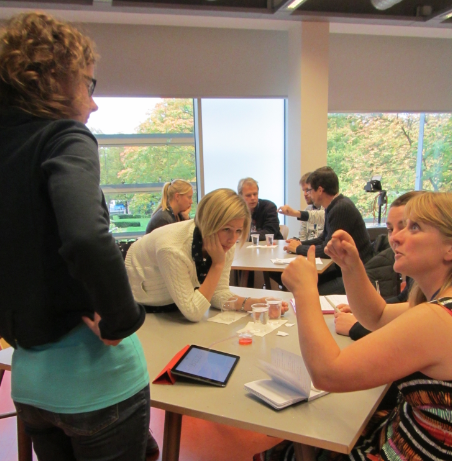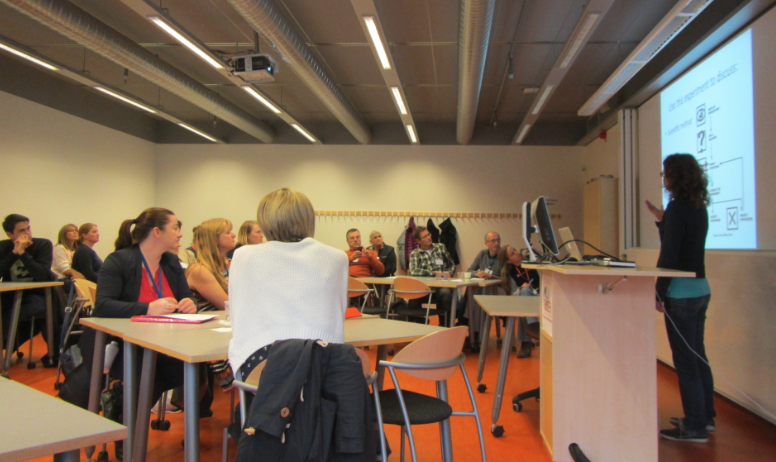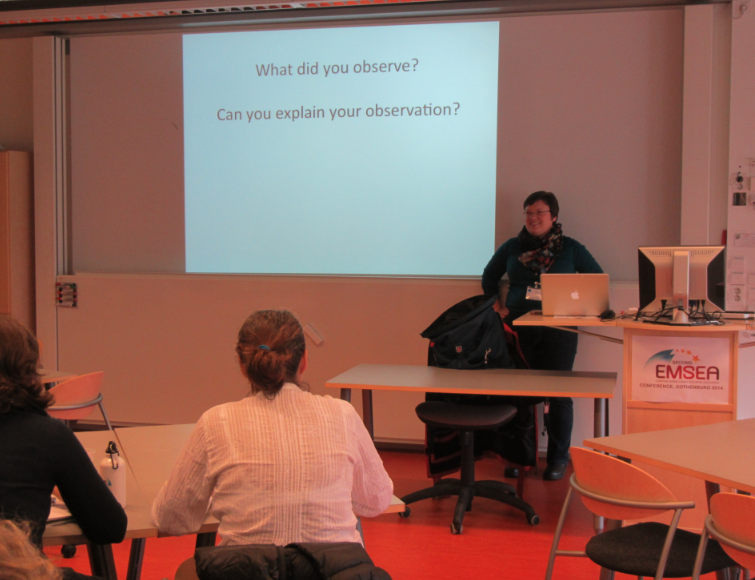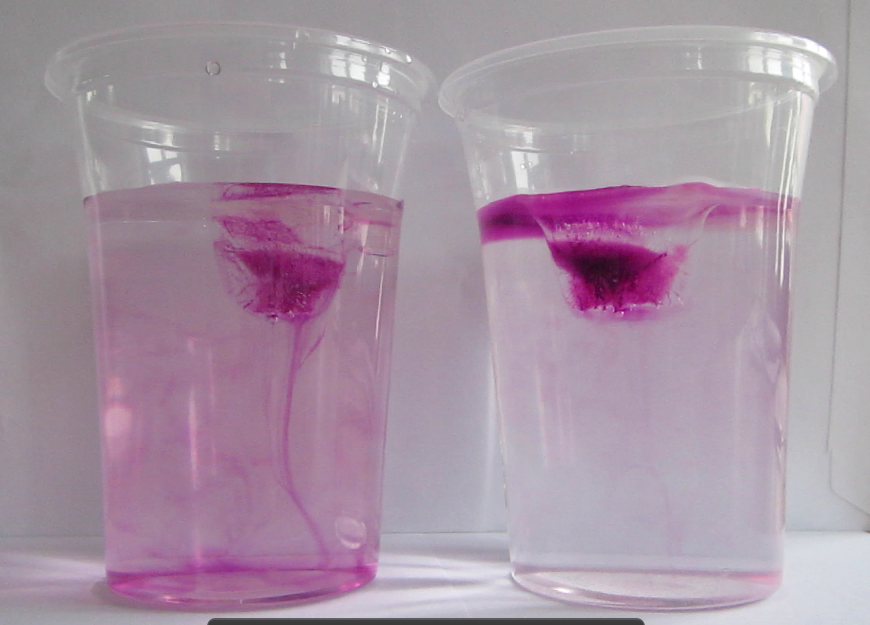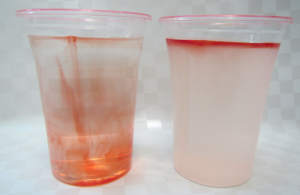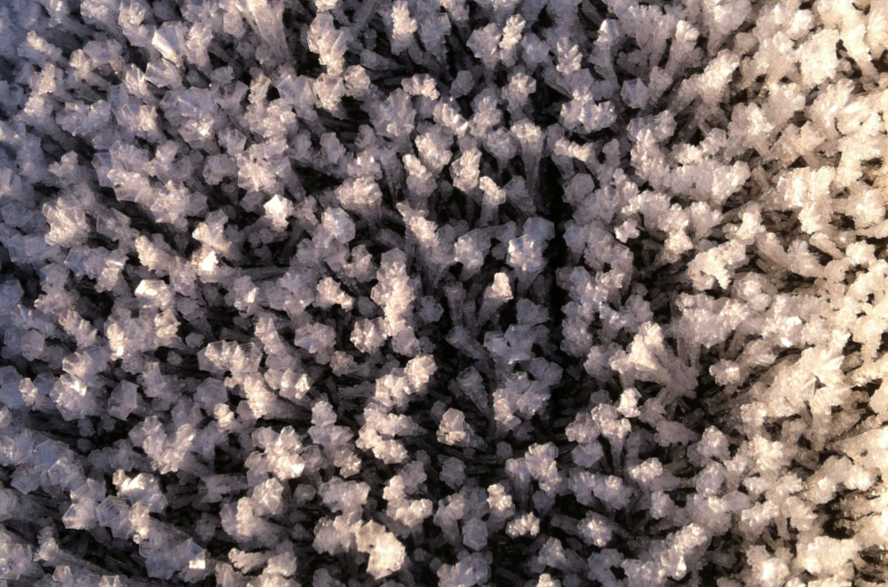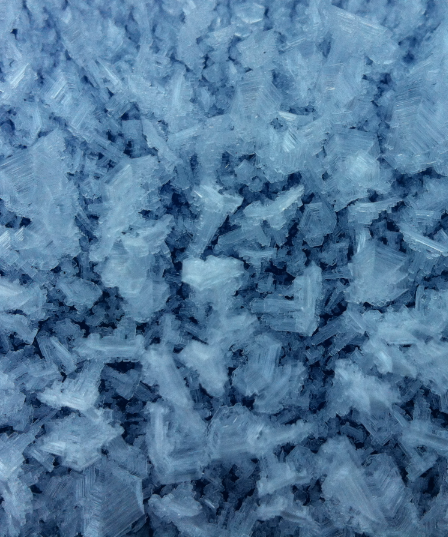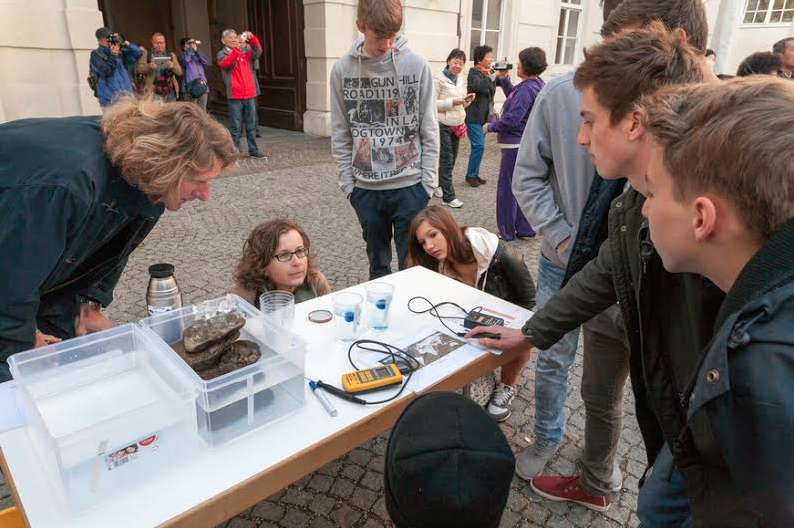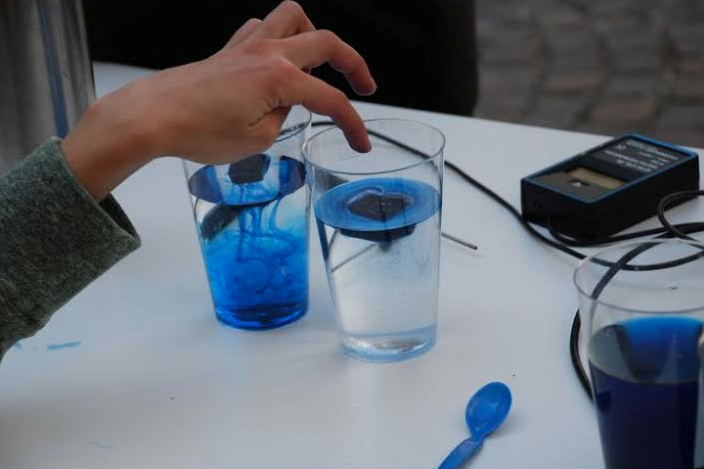My new favorite thing is to put strawberries through a blender and then freeze small portions of that to eat as ice cream later. It is super yummy plus you never know what you’ll see when you open the lid!
Sometimes, you get long crystals like these:
And then other times, you get something completely different. Look at those circular shapes! Perhaps that’s where the UFO landed? You can’t really see it in the picture, but those disks come quite a bit higher than the rest of the ice.
In the bottom left corner, you see a smudge – that is where I pried off one of the disks to see what might have caused it. Turns out there is a cavity underneath. So somehow bubbles in the strawberry mash freeze out into those disks?
I am guessing that the ice cream in the second picture came from a batch that I beat harder than the one in the first picture, hence more bubbles. Or maybe the one in the first picture sat outside the freezer longer, so the bubbles had all reached the surface and popped before it went into the freezer? What do you guys think? Seems like I should really be carefully writing protocols next time I’m making ice cream! :-)

